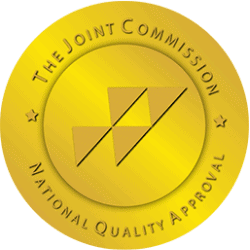If you are familiar with the 12-Step recovery model, you know that step four requires people to make a “searching and fearless moral inventory.” Many people also use the term personal inventory when discussing this step. If you haven’t completed this step yet, you may have questions. What is a personal inventory? How do I take a personal inventory? How does this help me in my recovery journey?
What is a Personal Inventory?
It may help to think of a personal inventory as a form of an autobiography. In both instances you are writing about yourself. You are looking back at your life, identifying significant moments, highlighting key characteristics, and addressing how your actions have affected others.
Of course, there are a few important differences between a typical autobiography and a personal inventory. For example, autobiographies are books that are usually written for the purpose of sharing your life story with large numbers of people. A personal inventory doesn’t have to be hundreds of pages long. And the intended audience is much smaller. Step five requires you to share your story with one other person.
But perhaps the biggest difference between a standard autobiography and a personal inventory is honesty. When we read most autobiographies, we understand that the authors are putting themselves in the best possible light. We also realize they are likely softening or avoiding descriptions of their less-than-admirable moments.
As clearly established in step four, a personal inventory should be “searching and fearless.” This means you need to examine parts of your life that you may prefer to never think about again. You need to honestly describe who you were in these moments, what you did (or didn’t do), and how your actions and decisions affected both your life and the lives of others.
The Importance of Taking a Personal Inventory in Recovery
It’s no accident that operating rooms are extremely well-lit places. In order for a surgeon to make vital repairs to a person’s body, they must be able to clearly see the cause of the problem and the resultant damage.
When you write your personal inventory, it can be valuable to put yourself in the metaphorical shoes of the surgeon. Before you can make essential changes to your life, you need to be able to look directly at your addiction, your behaviors, and the harm they caused.
In addition to knowing what a personal inventory is, it can be equally important to understand what it isn’t. Your personal inventory should not simply be an accounting of your flaws, mistakes, and shortcomings. As we will discuss in the next section, it is also valuable to honestly describe your skills, strengths, hopes, and values.
The purpose of your personal inventory—and of all other introspective aspects of your recovery—isn’t merely to document your failures. Your focus should be on developing an accurate understanding of who you were in the past and who you are now, with the goal of using this information to help you become the best possible version of yourself.
How to Take Personal Inventory
There isn’t one mandatory or correct way to take a personal inventory. There also isn’t one standard format for what your personal inventory should look like when you’re done. As is the case with so much about recovery, there are many paths that can get you to where you need to be. Your job is to find the route that works best for you.
One of the few absolutes about your personal inventory is that it should be a written document. You can write it out by hand or use a computer. If you so desire, you can hammer away on an old-school manual typewriter or open the notes app on your phone and let your thumbs do the work.
To get started, you may want to think about how you want to structure your inventory. Some people write a chronological account. Others organize their document by themes. Another option is to write your personal inventory as if you are writing a letter or an email to someone. Of course, you don’t have to actually send it. The person you write to doesn’t even have to still be alive, or even be a real person.
Some Questions to Ask Yourself
- Why do you think you started drinking or using drugs in the first place?
- As specifically as possible, how did your substance abuse and addiction affect you? How did they affect your friends, family members, or colleagues?
- What was most important to you before you started drinking or using drugs? What is most important to you today?
- Are there parts of your personality that caused you trouble in the past? What character traits have helped you survive difficult times?
- What do you like most about yourself?
- Do you feel you need to improve anything about yourself?
- Which personal failures or shortcomings do you most regret? Which ones caused the most damage to yourself or someone else?
- What does a successful future look like to you, and what do you need to do to get from here to there?
Find Addiction Treatment
A personal inventory can be an important part of your recovery efforts. But it shouldn’t be the first thing you do. If you haven’t yet found the help you need to stop drinking or using drugs, that should be your top priority.
If you are trying to find addiction treatment, remember you have many options. There is no single type of treatment that’s perfect for everyone. You should try to find the program or provider that can assess your needs and provide the type of treatment that will best meet those needs.
Providers that offer several types of therapy and multiple levels of care may be best prepared to offer the addiction treatment that’s right for you. Don’t be afraid to contact any facilities that you are considering so you can ask questions about their programs and services. The representatives of any reputable treatment center should be happy to provide you with the information you’re seeking.
Begin Addiction Treatment in South Florida
September is National Recovery Month. Ambrosia Treatment Center offers customized treatment for adults whose lives have been disrupted by substance use disorders and certain co-occurring mental health concerns. Programming options at our addiction treatment center in South Florida include detoxification, residential treatment, an intensive outpatient program, and outpatient services. If you’re ready to start or resume your recovery journey, the Ambrosia team is here for you. Contact us today to learn how we can help.




